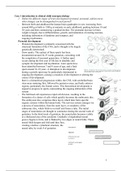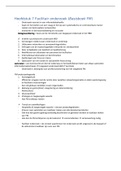Samenvatting
Summary Case 1 Introduction to clinical child neuropsychology
- Instelling
- Maastricht University (UM)
Samenvatting van alle literatuur van taak 1 introduction to clinical child neuropsychology in de elective Child Neuropsychology. ook geschikt voor advanced minor in psychology.
[Meer zien]






